Net Zero Energy



VMDO is a recognized expert in net zero energy design, having designed the first LEED Zero Energy school and over 500,000 square feet of net zero educational and community spaces.
Many architects claim zero energy expertise; only VMDO has the deep experience of delivering zero energy on LEED Silver budgets, without additional grants or funding. VMDO has demonstrated, time and time again, that exceptional performance and dramatically reduced operations costs is achievable today - on public school budgets and using state of the shelf technology.
When Discovery Elementary opened in 2015, it was the first net-zero school in the Mid-Atlantic and the largest net-zero project in the world to be verified by the International Living Future Institute.

We’ve helped create the guidelines
As contributing authors and editors of the ASHRAE Advanced Energy Design Guide for K-12 School Buildings, VMDO helped “write the book” on zero energy schools

When Howard County Maryland decided to transform an existing prototype into the first net-zero school in the state, they brought in VMDO as the net zero consultants for design, construction and commissioning.
The U.S. Department of Energy launched the Net Zero Accelerator at Discovery Elementary School – a national partnership aimed at demonstrating how renewable energy translates into cost savings and enhanced learning environments.
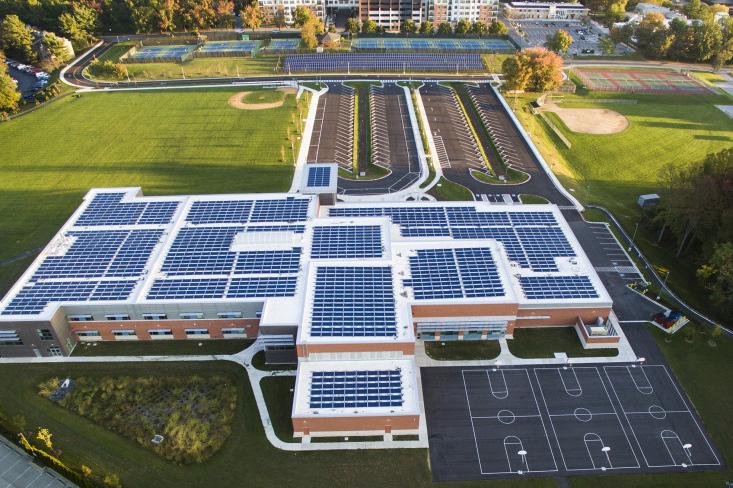
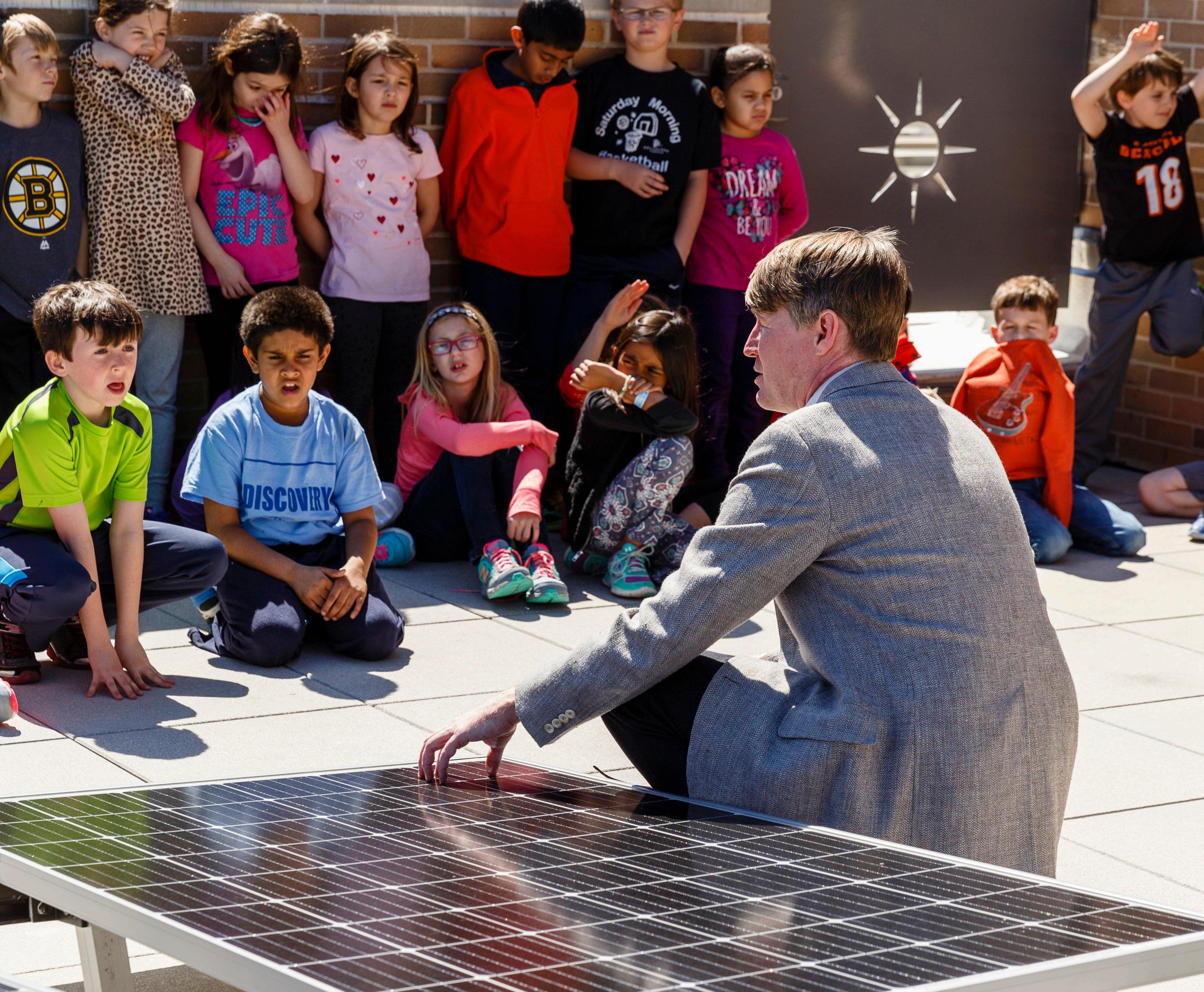
Zero Energy Ready
21 EUI (modeled) | 28.0% Window-Wall Ratio | Airtightness: 0.15 cfm/sf @ 75Pa (target) | HVAC: Ground-source heat pumps + DOAS
Cardinal Elementary School
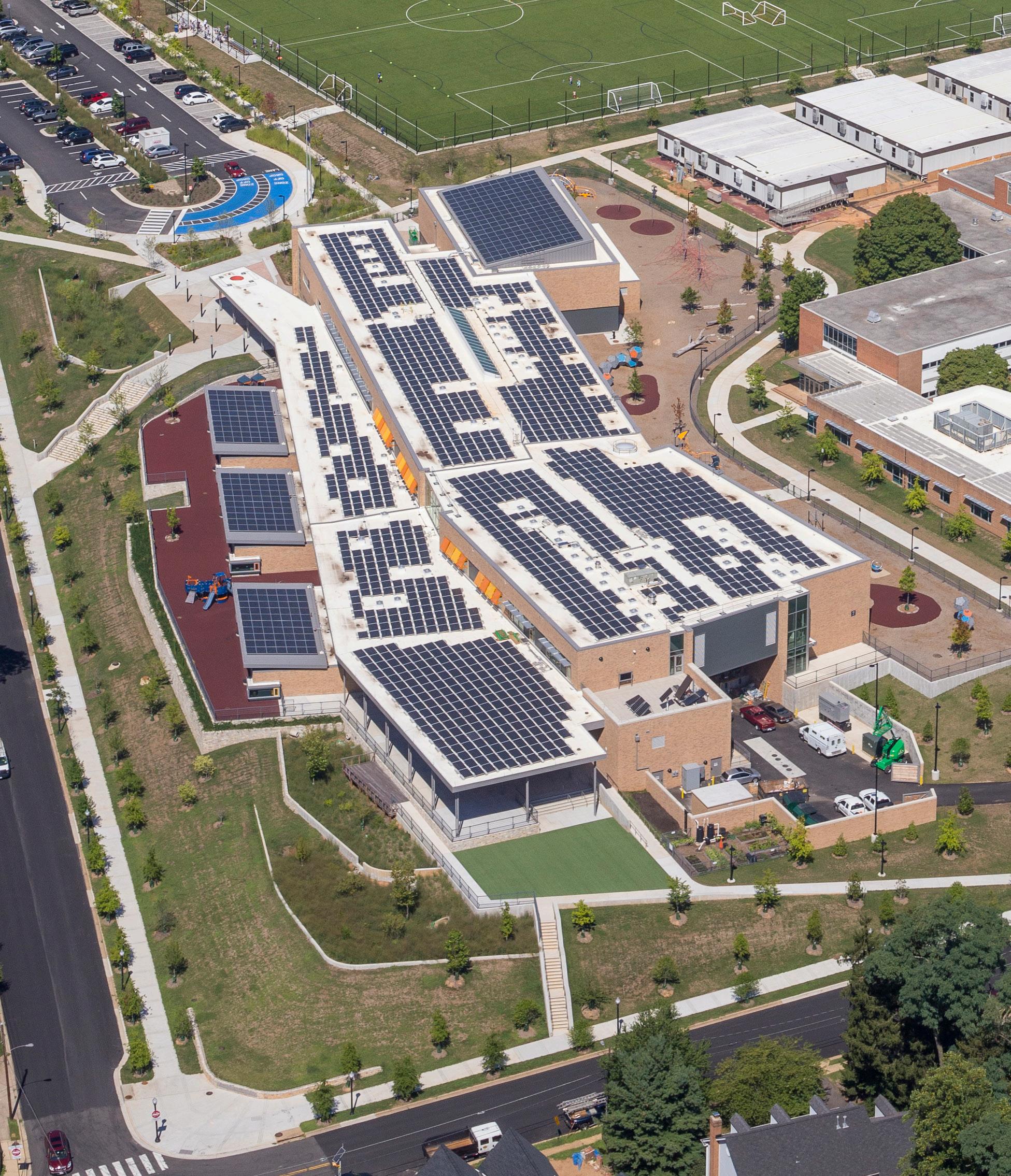
Emerging Zero Energy (~475kW via PPA 2022)

17.8 EUI (modeled)
26.8% Window-Wall Ratio Airtightness: 0.101cfm/sf @ 75Pa (actual)
HVAC: Ground-source heat pumps + DOAS
Stead Park Community Center
Emerging Zero Energy (~74 kW via PPA 2024)
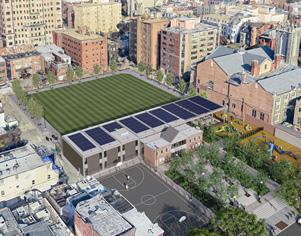

24 EUI (modeled) | 41% Window-Wall Ratio
Airtightness: 0.15 cfm/sf @ 75Pa (target)
HVAC: Ground-source heat pumps + DOAS
Zero Energy Verified (496 kW 2017)
14.7 EUI (actual) | 26.8% Window-Wall Ratio
Airtightness: 0.123 cfm/sf @ 75Pa (actual)
HVAC: Ground-source heat pumps + DOAS
Zero Energy Ready
28.6 EUI (modeled) | 21% Window-Wall Ratio
Airtightness: 0.15 cfm/sf @ 75Pa (target)
HVAC: Water-source heat pumps + DOAS
Emerging Zero Energy (~340 kW PPA 2023)
17.1 EUI (actual) | 24.7% Window-Wall Ratio
Airtightness: 0.16 cfm/sf @ 75Pa (actual)
HVAC: Ground-source heat pumps + DOAS
Alice West Fleet
Elementary School

Zero Energy Verified (582 kW via PPA 2021)
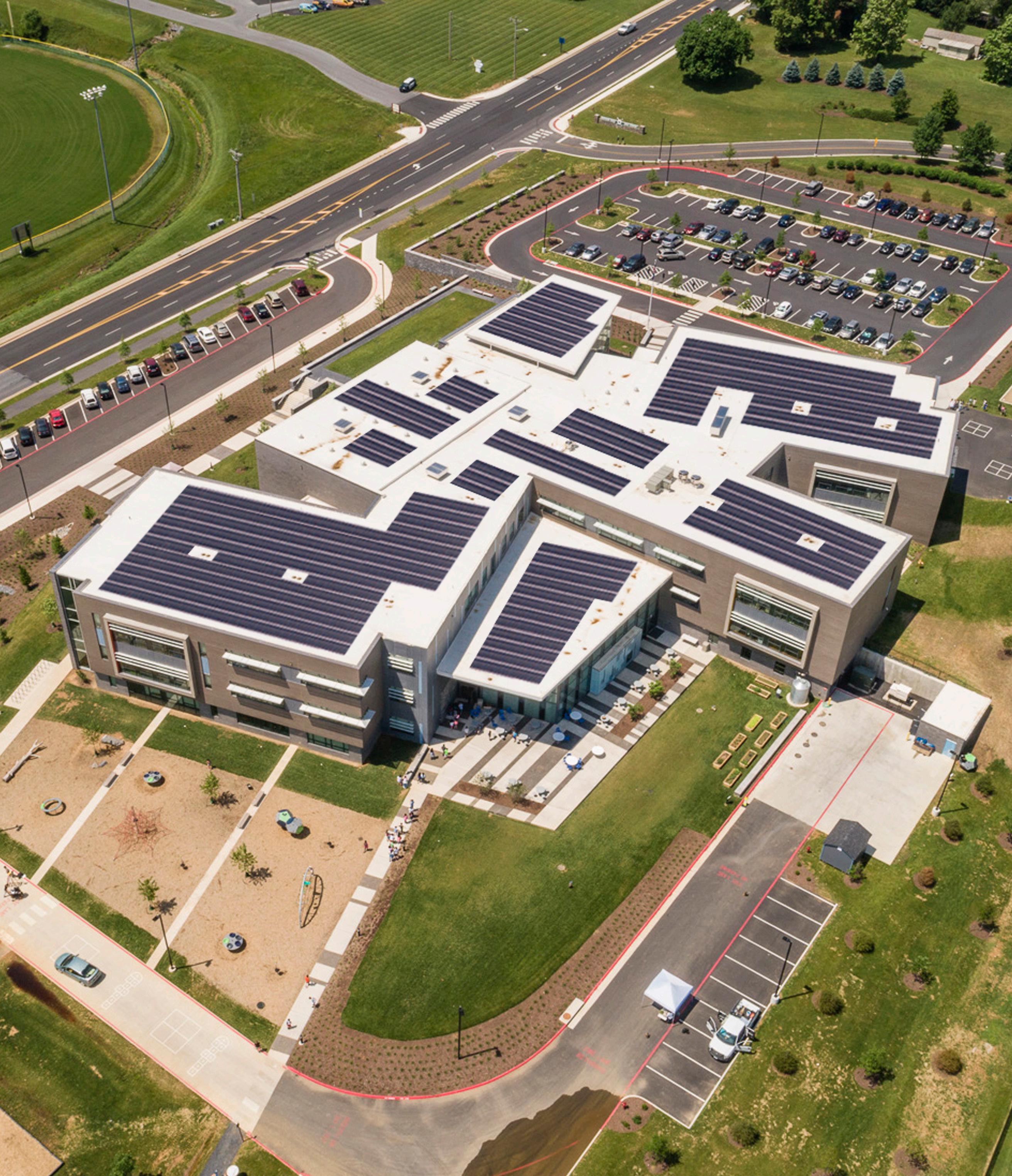


17.2 EUI (actual)
21.6% Window-Wall Ratio
Airtightness: 0.15 cfm/sf @ 75Pa (target)
HVAC: Ground-source heat pumps + DOAS
Emerging Zero Energy (~345 kW via PPA 2022)
21.2 EUI (modeled) | 35.7% Window-Wall Ratio | Airtightness: 0.16 cfm/sf @ 75Pa (actual) | HVAC: Ground-source heat pumps + DOAS
Bluestone Elementary School Poolesville High School Lubber Run Community Center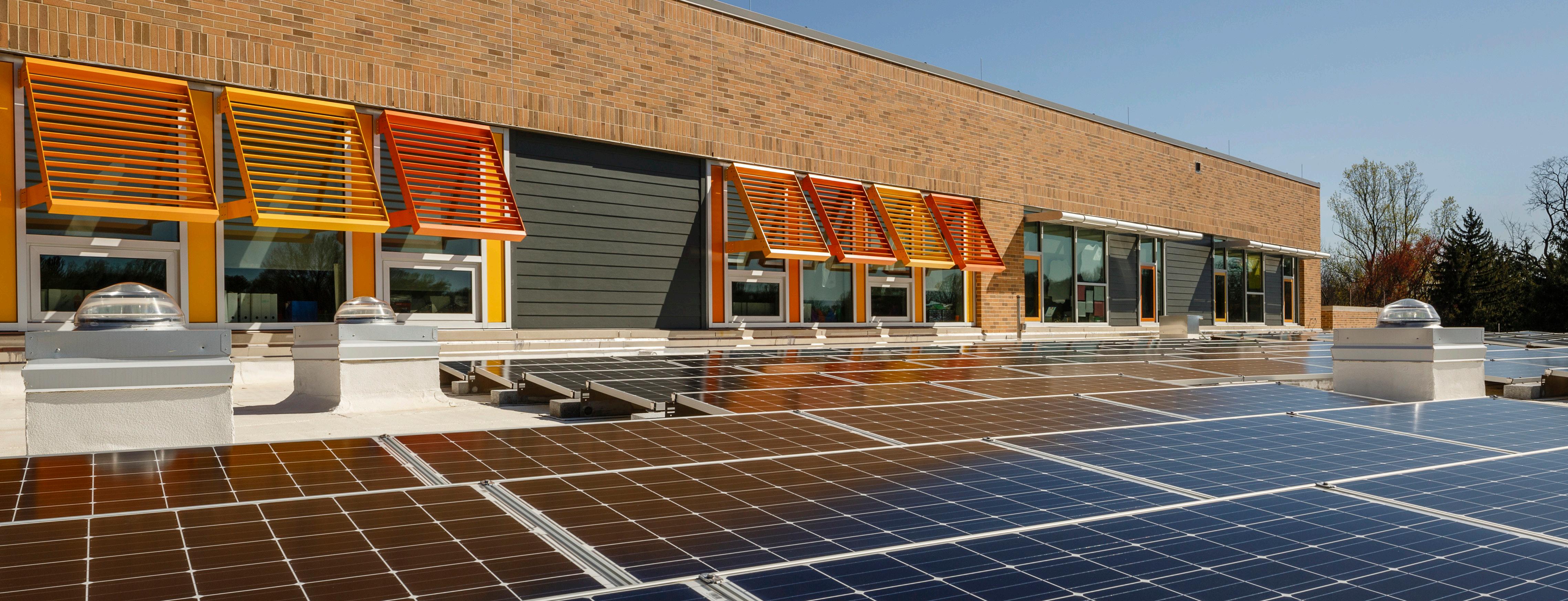
We know a lot about what it takes to realize a net zero project in our climate—from aligning the team around the same goal, to designing the building to deliver the best performance and experience, to making sure construction quality will deliver net zero, to working with owners to ensure systems are functioning properly and measuring actual performance. Here are a few rules of thumb that we use on our projects.
Site
• Identify site and layout of geothermal well-field, sized for building with an EUI of 25
• Coordinate ZE goals with the site stormwater strategy (e.g., retainage, treatment) so that green roofs are not required
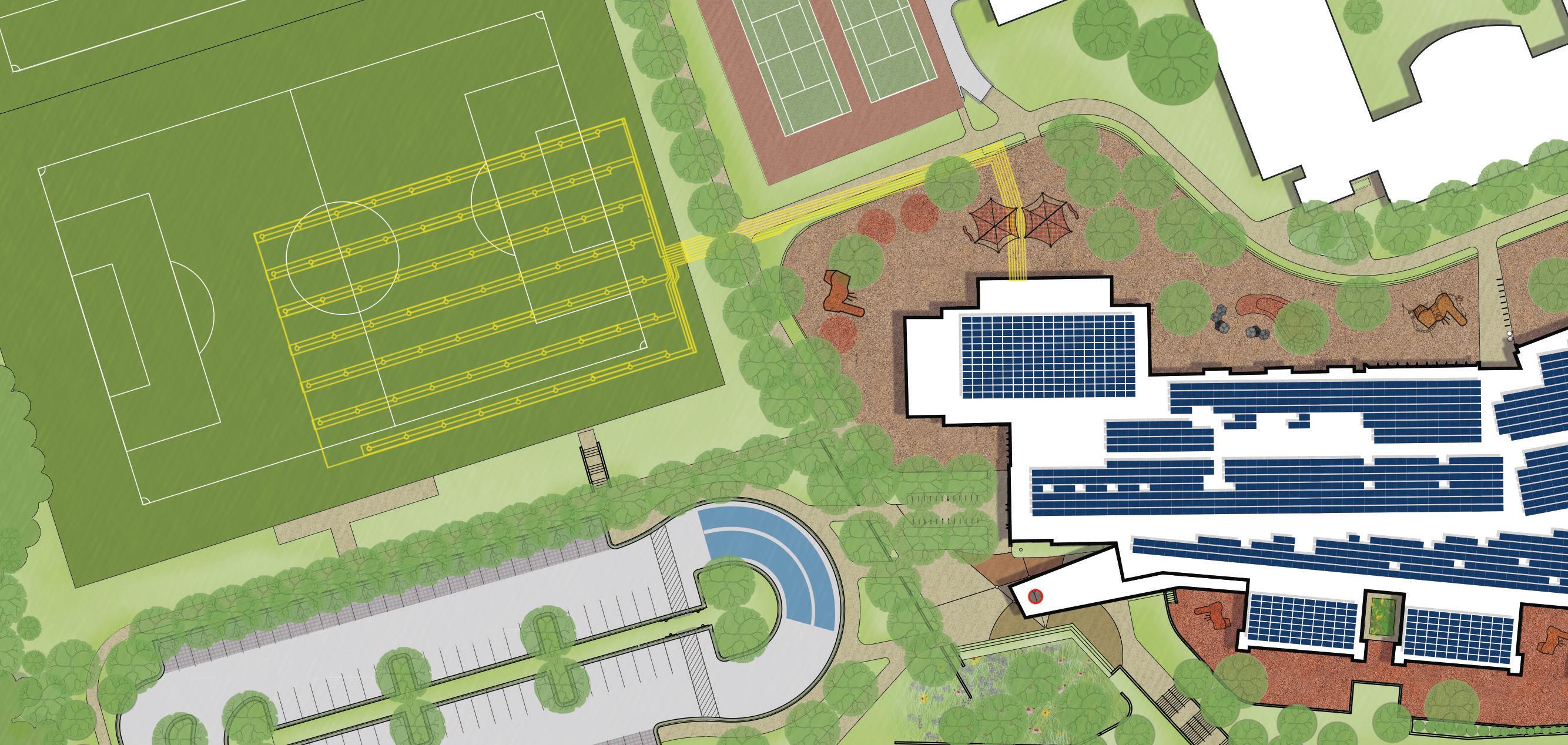
• Where possible, locate major roof expanses to avoid shadows from neighboring buildings/context
• Investigate all energy-reduction potentials within program (e.g., how/what is cooked, how/when rooms are occupied) and operations (e.g., IT/scheduling)
• Conduct a detailed inventory of owner-supplied equipment, establish limits, and set low-energy standards for all purchases
• Deliver systems that can be easily and regularly maintained
• Design and equip kitchens to eliminate type 1 exhaust hoods

• Optimize building orientation and massing. Step massing up from south to north so that roof elevations don’t cast shadows on each other
• Use PV array size requirements to inform roof design/locations

• Limit glass on east and west sides and provide shaded glass along the south. Provide a window/wall ratio no greater than 40%, complement daylighting with all LED electric lighting

• Deliver a tight, highly insulated envelope. Specify thermallybroken windows and high performance glazing

• Require building pressurization testing to meet minimum airtightness goal of 0.15 cfm/SF
• Provide ground source heat exchange and heat pumps with dual stage compressors; implement demand-controlled ventilation that is separate from heating/cooling
• Pursue aggressive heat recovery at all scales

• Provide combustion-free equipment (mechanical, food service)
• Maintain a “clean roof”; locate units inside the building or on the ground and keep maintenance personnel off of the roof
• Simply wherever possible: try to run all systems through a single BAS and avoid complicated lighting control systems.
• Use fewer, but higher quality, air and occupancy sensors

• Provide extensive submetering and detailed power monitoring
• Ensure live and historic building data is easily available without compromising network security or being trapped behind a firewall
• Implement on-site and/or off-site renewables (either through direct purchase, PPA or other mechanism)
• Where allowed by codes, consider battery storage to eliminate backup generators
• For NZE-ready projects: Ensure that there are designated locations for future invertors and conduit to roof. Provide a conceptual PV layout demonstrating that a future array can meet the needs of the building

By using common-sense solutions that conserve energy, facilitate easy maintenance, and prolong durability, thousands of dollars in operating costs can be redirected back to school budgets to invest in programming, salaries, and capital improvements.
K-12 schools are extremely well placed to generate their own energy and sell the excess to their local utility companies. At Discovery Elementary School, VMDO delivered a zero energy building on a LEED Silver budget. The project bid $2M under budget (including PVs) and the building is operating more efficiently than predicted, saving the district more than $100,000 per year in avoided utility costs and sales of excess renewable power exported to the grid.

$0.11 Annual Cost / SF to Operate Discovery Elementary
V/S
$1.32
Average APS Elementary School
Bluestone’s net-zero ready design saves HCPS $136,000 in avoided utility costs when compared with other HCPS elementary schools—even before PVs are installed.Schools’ operating dollars are some of the most precious of all public tax dollars – and are increasingly under strain. Net zero energy buildings help to reduce school utility and maintenance costs.
VMDO has collaborated with UC Berkeley’s Center for the Built Environment (CBE), the leading researcher in post-occupancy evaluations, to create a custom survey that solicits feedback on occupant comfort, sustainability, design, community, safety and health. We supplement this information with face-to-face interviews and on-site observations to better understand how well a building is meeting the needs of all users.
We’ve learned that occupants in our net zero energy buildings are happier, more engaged, and less absent when compared to users in other buildings.

>34%
fewer teacher absences at Bluestone compared to other HCPS elementary schools (2018)
The Livable Building Award by the CBE identifies one project annually with the highest user feedback scores in the country. Two VMDO NZE projects, Bluestone Elementary School (2019) and Discovery Elementary School (2021) have been recognized with this award.

Typically, over 60% of a district’s budget is spent on staff salaries and benefits alone. Net zero energy buildings can help attract and retain staff.Bluestone Elementary Post Occupancy Survey Results
Arlington, Virginia
Largest ILFI Certified NZE Project in the World in 2015 First LEED Zero Certified School
98,000 SF on 2 stories
650 students PK-5
Insulated concrete forms (ICF)
Geothermal HVAC
Demand Control Ventilation
All LED Lighting
Target EUI = 23 kBTU/SF/year
Actual EUI = 14.7 kBTU/SF/year
496 kW PV array via direct purchase
Bid $2M under budget ($333/SF with PV)
Opened 2015
Discovery Elementary School is Arlington Public Schools’ first elementary school designed in the 21st century, and the first net-zero energy school in the Mid-Atlantic region. While built to address rapidly growing student enrollment in Arlington, the school was designed to meet a larger goal – to prove what can truly be achieved with a new public school facility. To this end, careful attention was focused on designing and building a school that supports how and where students learn. Every nook and cranny of the school is arranged to create a seamless integration between design, sustainability, and learning. Recognizing that students are the creators of our collective future, Discovery Elementary sets the stage for the development of the skills necessary for long-term stewardship of our world.





Arlington Public Schools

Arlington, Virginia
111,634 SF on 4 stories + 100,611 GSF Garage
752 students PK-5
2 levels underground parking
Steel frame with spray foam
Heavy timber roof structure
Geothermal HVAC
Demand Control Ventilation
All LED Lighting
Target EUI = 23 kBTU/SF/year
Actual EUI = 17.2 kBTU/SF/year
582 kW PV array via PPA
$220/SF w/ parking, $347/SF building only
Opened 2019
Reflecting a strongly-voiced community desire to “build up, not out,” Fleet Elementary School is Arlington’s first four-story elementary school – and one of the first in the Mid-Atlantic. The school is also the second of three net zero energy schools for Arlington Public Schools (APS). In part because of APS’ commitment to net-zero energy, Arlington County was the first locality in Virginia to commit to 100% renewable electricity by 2035. In April 2020, Virginia became the first state in the South to commit to a 100% clean energy agenda. Fleet Elementary School features a 582kW rooftop solar array with geothermal heating and cooling as well as numerous design innovations that reduce the school’s carbon footprint while maximizing energy savings for the school district.
Largest Verified Net Zero School in Virginia LEED Schools v4 Gold Certified
This is a net zero energy school!
Alice West Fleet Elementary is the second of three net zero energy schools VMDO has designed for Arlington Public Schools. Sited adjacent to a middle school, park, and recreation center, the school transforms a parking lot into a community landscape that improves accessibility, connectivity, and sustainability for the entire 20-acre site.

Arlington Public Schools
Arlington, Virginia
110,500 SF on 4 stories

732 students PK-5
18,340 SF of renovation
Geothermal HVAC
Demand Control Ventilation
All LED Lighting
Real-Time Power Monitoring
Target EUI = 23 kBTU/SF/year
Predicted EUI = 17.8 kBTU/SF/year
~475 kW PV array via PPA
$382/SF GMP (CMAR)
Opened 2021
VMDO’s third net zero energy school in Arlington, Cardinal Elementary School sets new standards for design excellence in sustainability, energy performance, and innovative learning environments for Arlington Public Schools. Cardinal Elementary follows in the footsteps of the NZE milestone established by Discovery Elementary and the four-story NZE school precedent established by Fleet Elementary. However, different from these previous projects, Cardinal is actually an addition to the existing Reed School/Westover Library and features a significant renovation scope that optimizes existing building stock to achieve net-zero energy. Building on lessons learned in NZE design and construction, this project features the lowest embodied energy of VMDO’s previous NZE projects.
Pursuing LEED Zero Energy Certification + LEED Schools v4 (Pending 2022)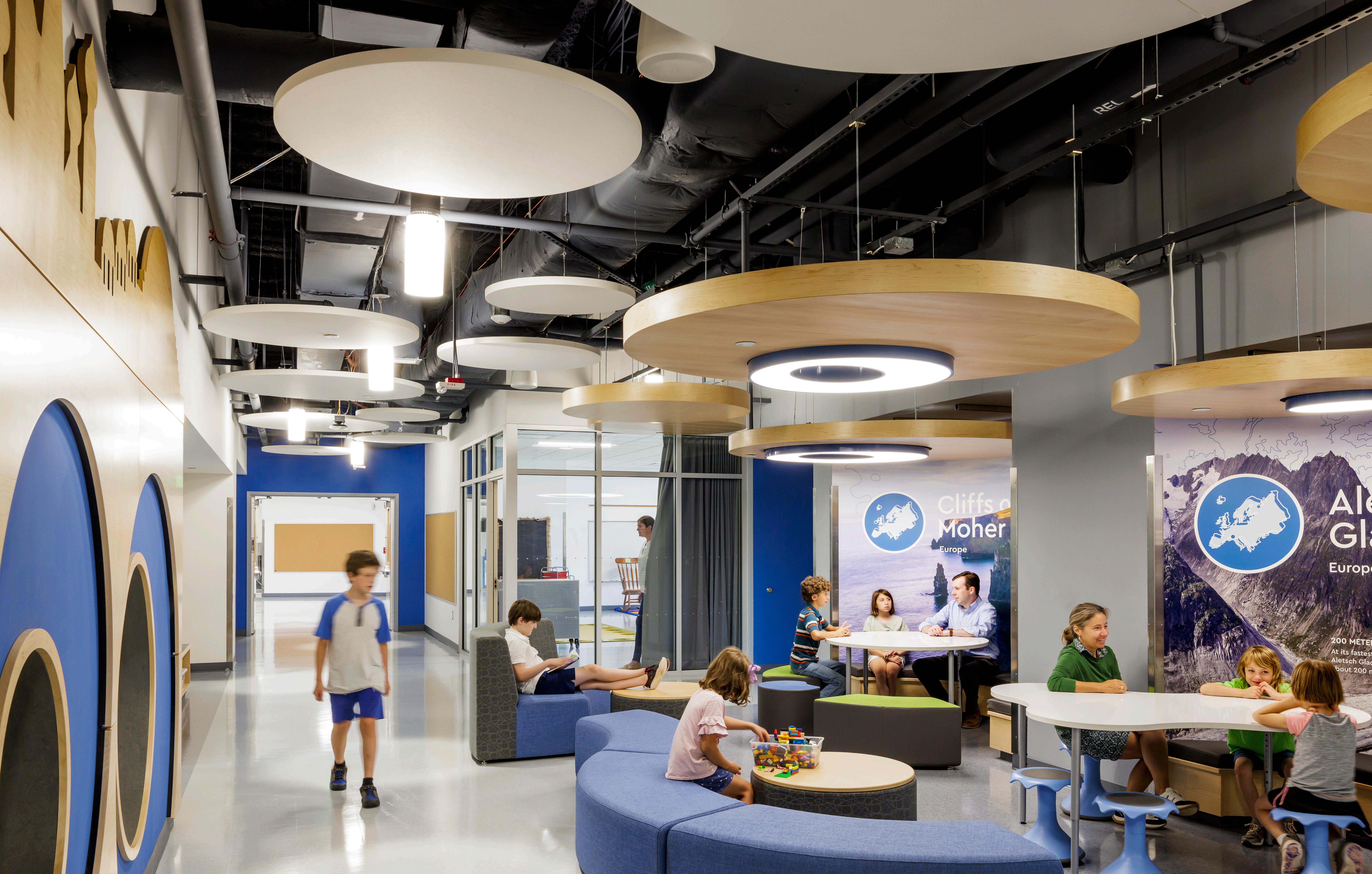


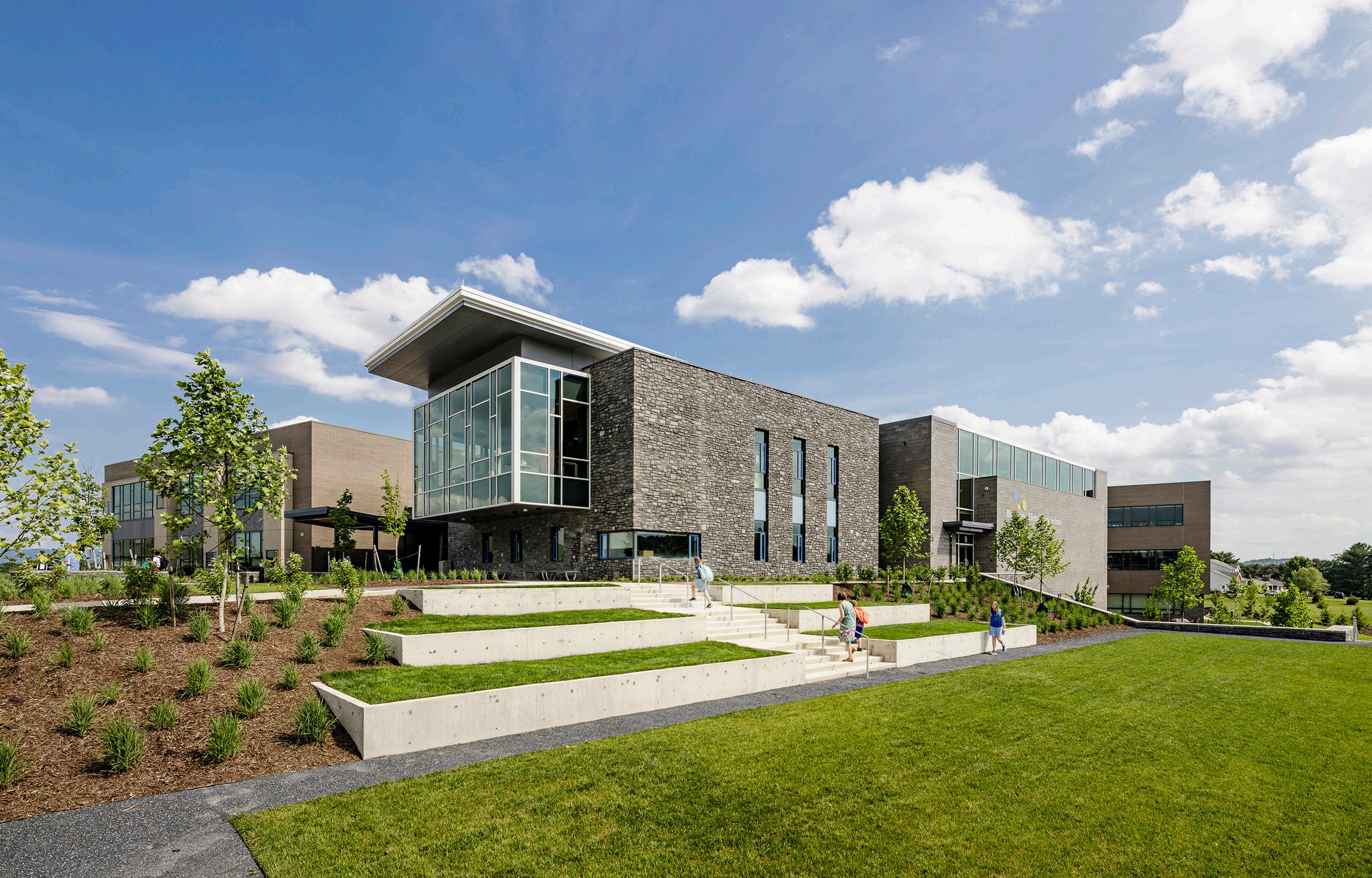
Harrisonburg, Virginia
103,700 SF on 3 stories
730 students K-5
Steel frame with spray foam
Geothermal HVAC
Demand Control Ventilation
All LED Lighting
Real-Time Power Monitoring
Target EUI = 23 kBTU/SF/year
Actual EUI = 17.1 kBTU/SF/year
$245/SF
340 kW PV array via PPA (2022)
Opened 2017
Nicknamed “the friendly city,” Harrisonburg is a designated refugee relocation city. The winner of an AIA Committee on Architecture for Education (CAE) design award, the design of Bluestone Elementary School embraces cultural diversity while highlighting the relationship between the school and its global context – helping students relate to the larger world while feeling part of a community designed just for them. The 10.8-acre site is a unique post-agricultural landscape with varied topography, rock outcroppings, and sweeping views of the mountains – affording dynamic opportunities for a place-based learning landscape. The school’s compact, three-story massing maximizes site area for play and outdoor learning while the landscape supports environmental and human health education by creating a communal, active, and bio-diverse habitat.
 LEED Schools v2009 Gold Certified
AIA CAE Award Winner
2019 Livable Building Award
LEED Schools v2009 Gold Certified
AIA CAE Award Winner
2019 Livable Building Award


Arlington County Parks & Recreation
Arlington, Virginia
2 stories + mechanical basement
53,000 SF + underground parking
Precast insulated system (Thermomass)
Heavy timber roof structure
Geothermal HVAC
All LED Lighting
Target EUI = 25 kBTU/SF/year
Predicted EUI = 21.2 kBTU/SF/year
$420/SF
345 kW PV array via PPA
Rainwater harvesting + biofiltration
Opened 2020
Located in Lubber Run Park, a precious natural resource in urban Arlington County, Virginia, the Lubber Run Community Center replaces a previous 1950’s-era community building on a tight 4.5-acre site that also includes new outdoor recreation spaces and amenities. The first net zero-ready parks & recreation project in Arlington, the Center integrates building and landscape as a response to an urban challenge. Connection to nature and preservation of open space were essential to designing the new building, and as a result, parking and some programs are located underground to allow for increased outdoor amenities – ultimately creating a shared public amenity that is greater and greener for residents.
 Pursuing LEED NC v4 Platinum (Pending 2022)
Pursuing LEED NC v4 Platinum (Pending 2022)
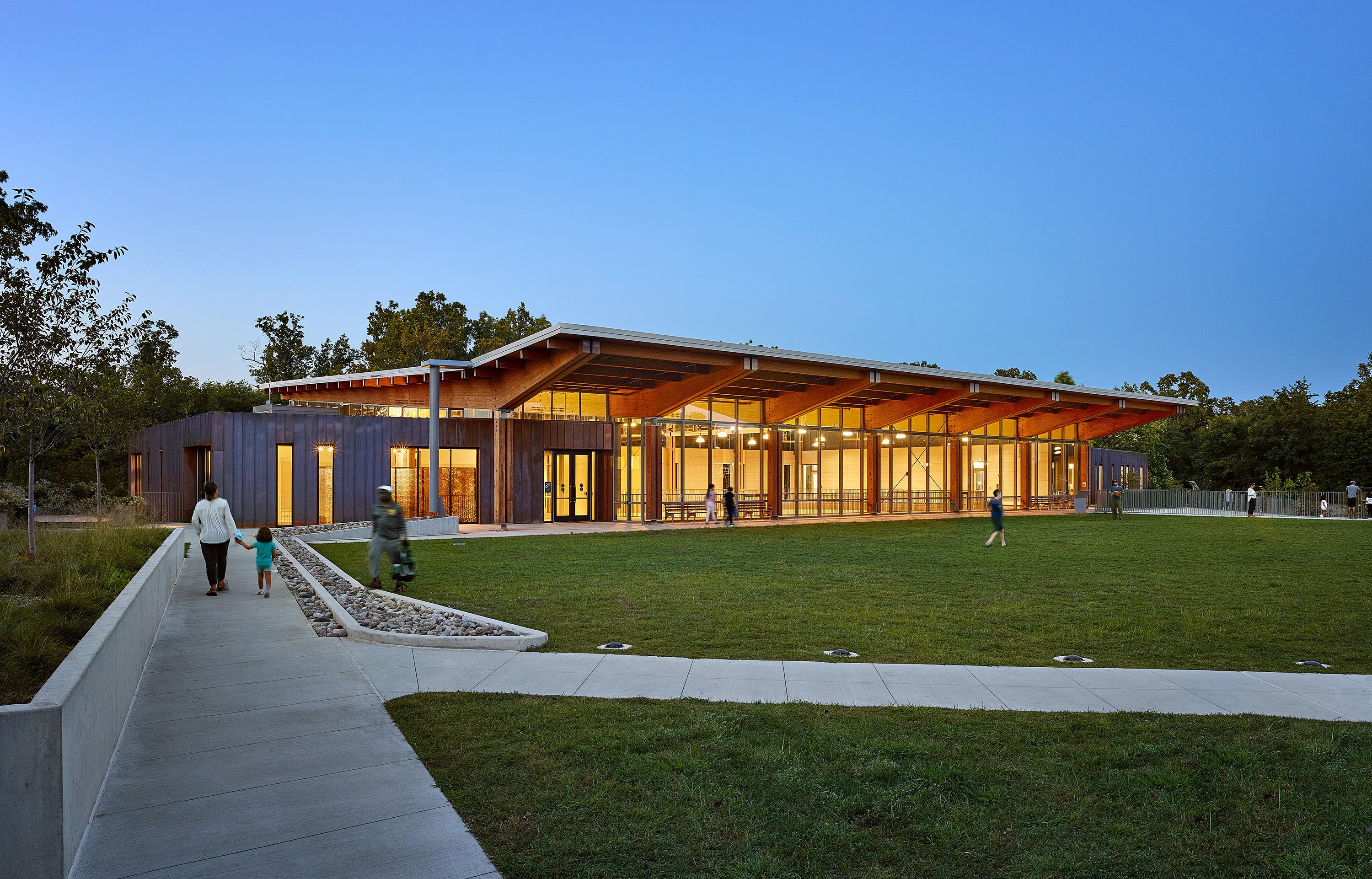
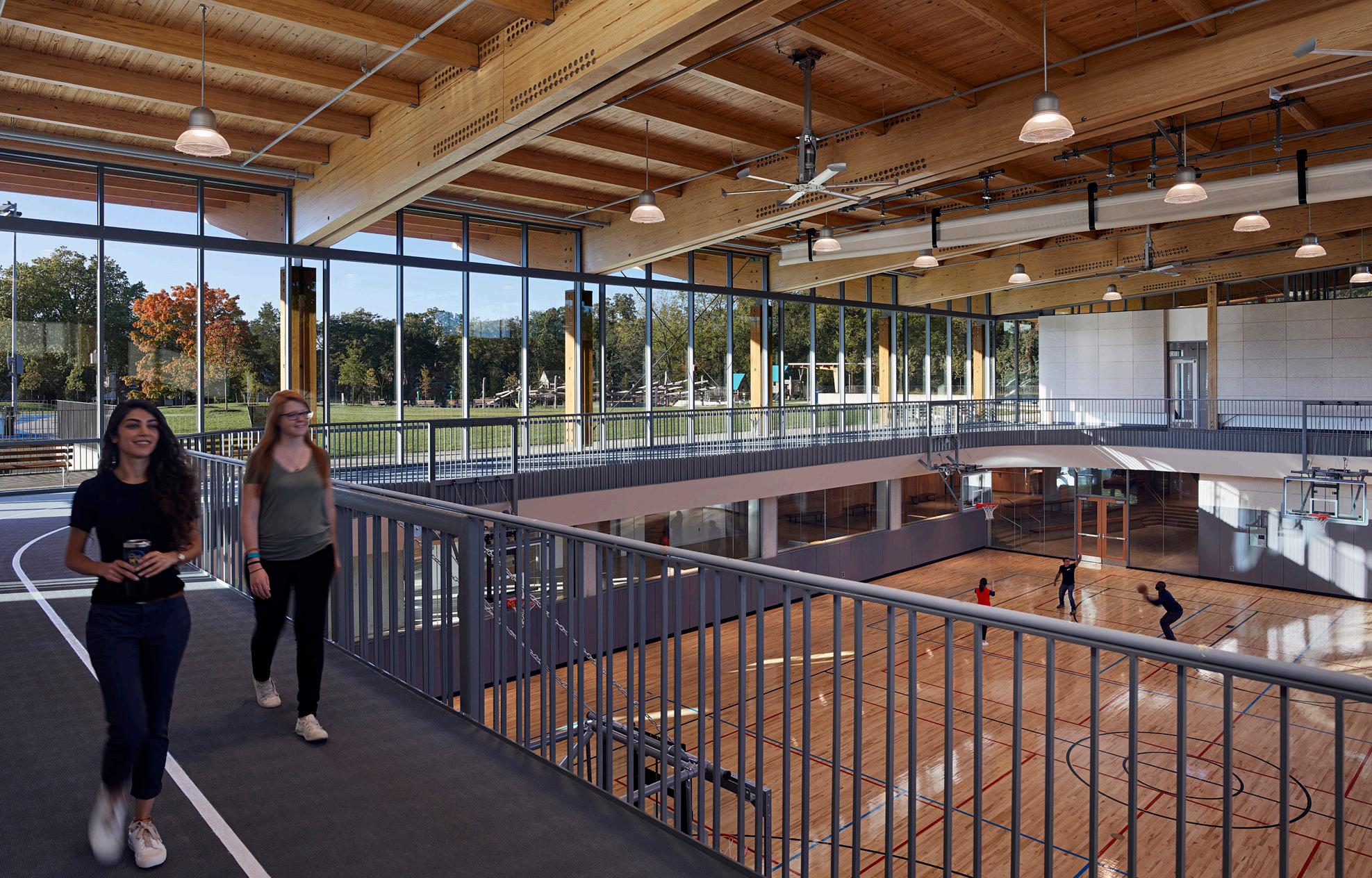



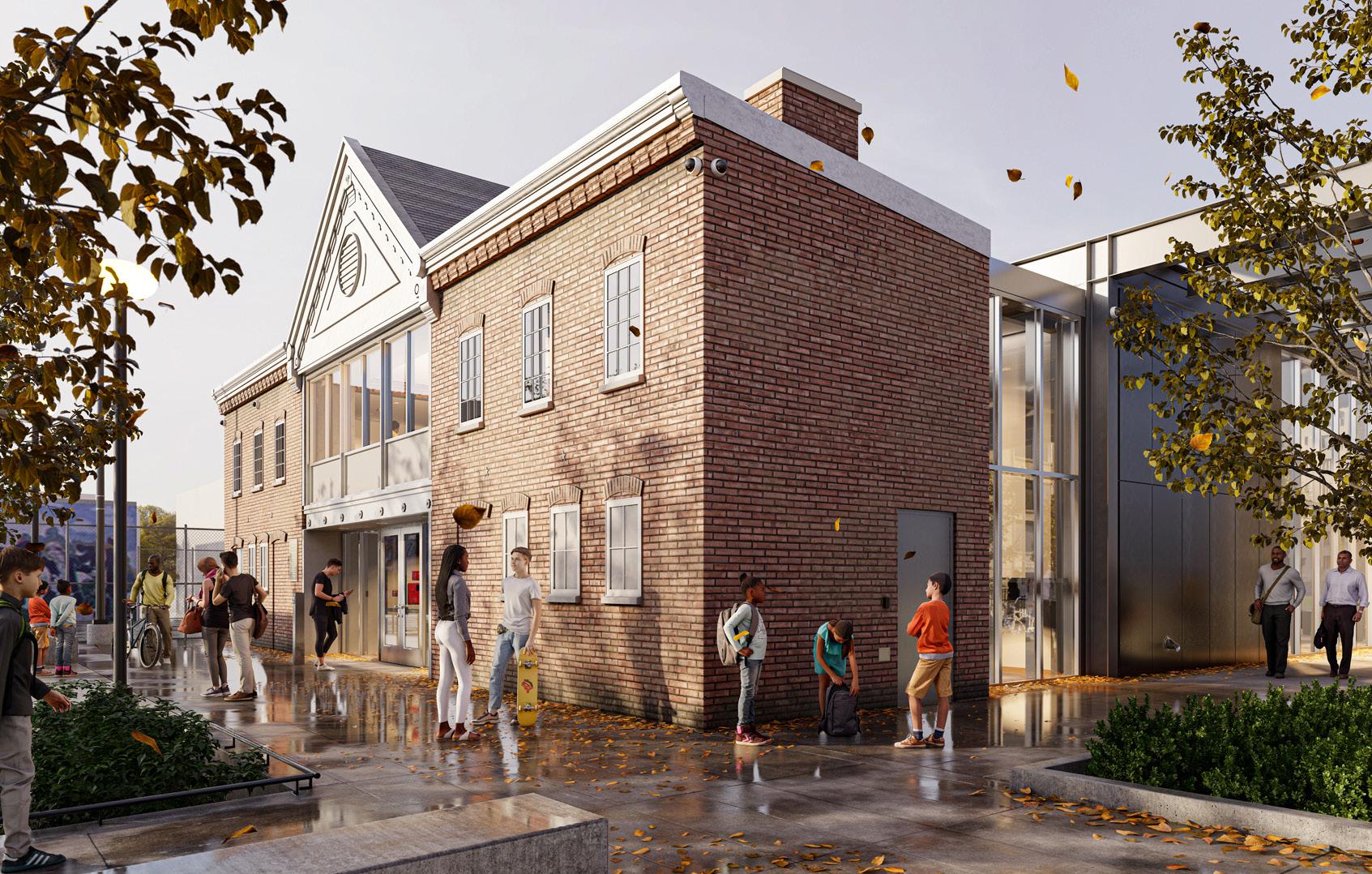
Washington, DC
Pursuing LEED Gold Minimum + ILFI Zero Energy (Pending 2025)

11,700 SF on 2 stories
1,720 SF Historic Renovation
Geothermal HVAC
Demand Control Ventilation
All LED Lighting
Real-Time Power Monitoring
Target EUI = 24 kBTU/SF/year
~75 kW PV array via PPA
$684/SF (building only, CMAR)
Opening in 2023
With a variety of multipurpose community and recreational spaces, the Stead Park Community Center is a modernization and addition to the existing historic community center near Dupont Circle. The design includes new flexible spaces for community gatherings, group classes, arts, education, fitness activities, and a demonstration kitchen as well as new outdoor park spaces with courtyards, a sensory garden, and new play equipment. As the first Net-Zero community center in Washington, DC, this facility highlights the District’s commitment to the future with sustainable practices. The project is partly an historic renovation of an existing structure – a carriage house constructed in 1888 – to foster community and recreational programming in this vibrant and diverse urban neighborhood.
Piedmont Virginia Community College
Charlottesville, Virginia
36,746 SF on 3 stories
Geothermal HVAC
Demand Control Ventilation
All LED Lighting
All Electric Building
Real-Time Power Monitoring
Target EUI = 35 kBTU/SF/year
~470 kW PV array via direct purchase
$620/SF (CMAR)
Opening in 2024
Piedmont Virginia Community College’s new Advanced Technical Training Center will serve as a vibrant hub for academic life that showcases PVCC’s comprehensive commitment to student success. The Center creates a campus destination that takes into account the unique and diverse needs of today’s community college student while also inspiring a sense of community and connection. The building includes advanced manufacturing and robotics labs, cyber-security and forensics labs, instructional spaces, administrative offices, student group spaces, and improved outdoor public spaces. As the first net zero community college project in Virginia, the building will serve as a new campus landmark that showcases PVCC’s commitment to future-focused workforce training and career development for the region.
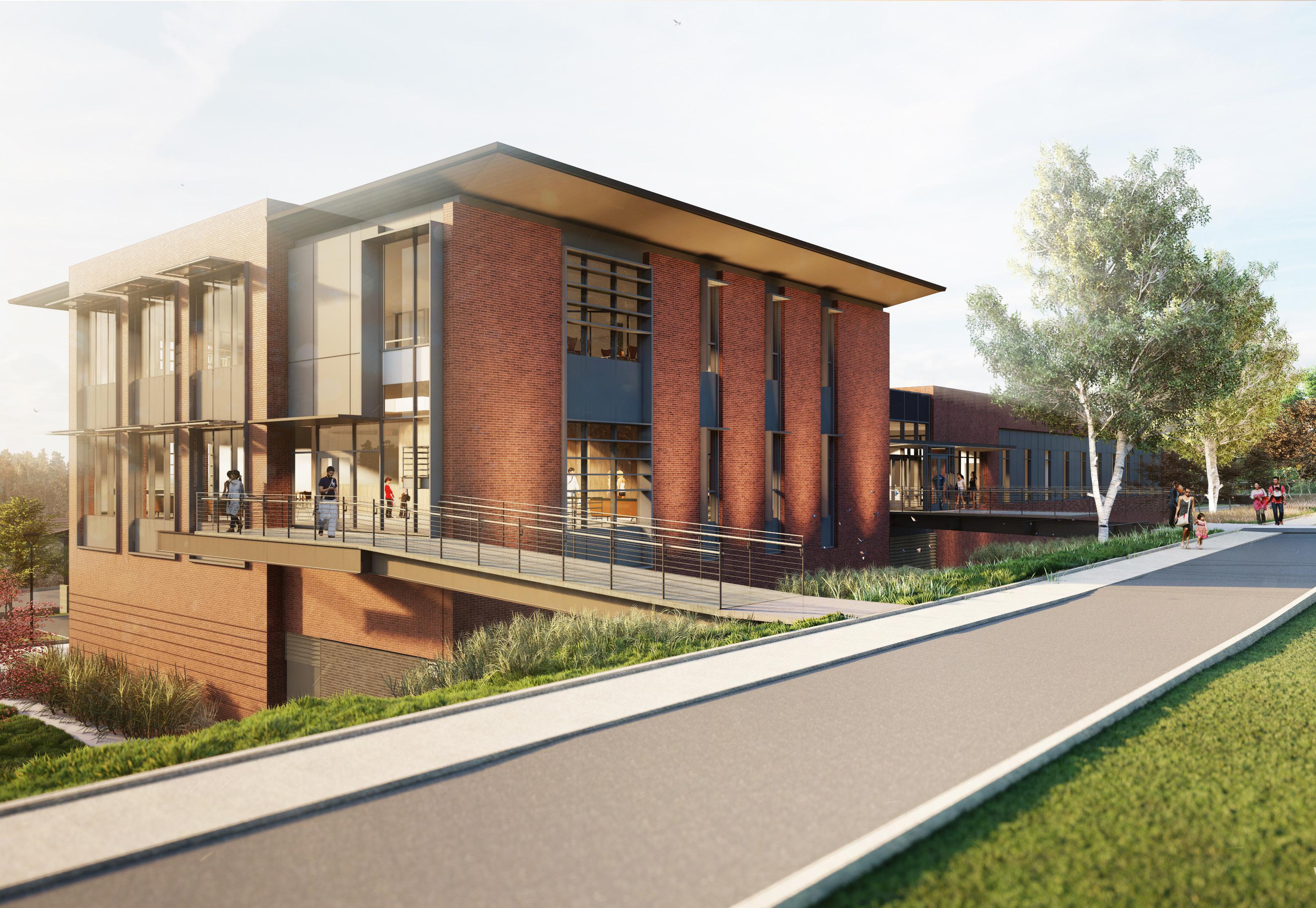 Pursuing LEED NC v4 Gold
Pursuing LEED NC v4 Gold


Architecture that expresses how the building works and graphics that celebrate to the unique qualities of the place engage users as participants and caretakers of their community and the natural world.

It is not enough for a building to save energy and reduce costs. These important community investments have a responsibility to celebrate the community, engage users, and support shared values.
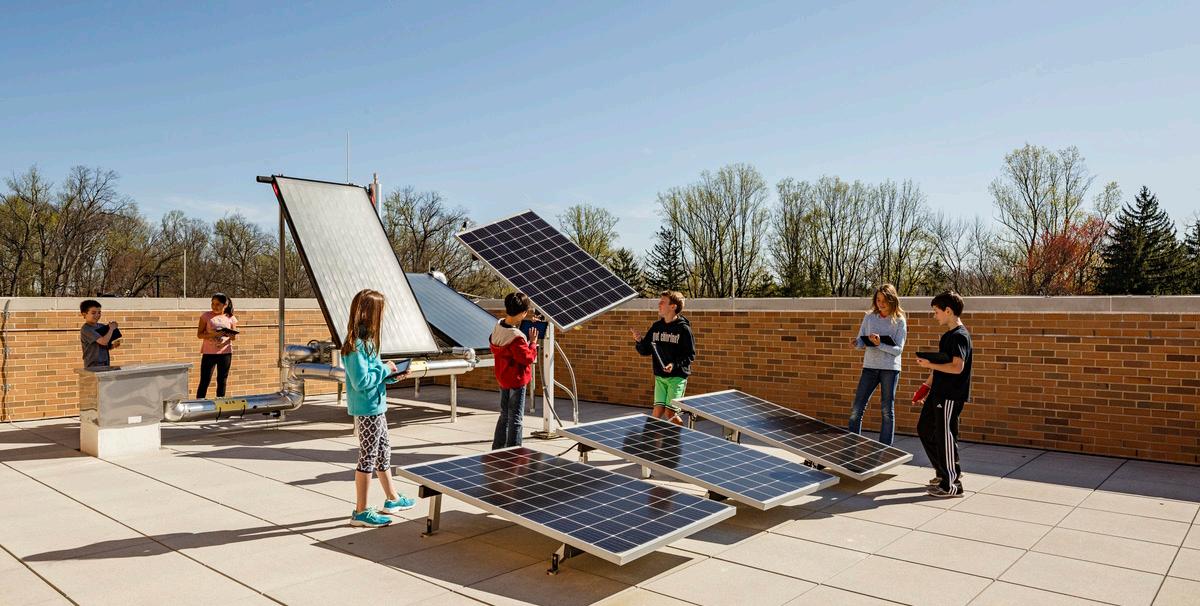

Environmental graphics and wayfinding help showcase what is special about a place, its people, and its natural and historical contexts. Graphic theming and storytelling support community identity and foster a sense of belonging. Environmental graphics and wayfinding can also encourage healthy behaviors. Stairways, water fountains, healthy food options, and sustainable materials can be co-located with related facts and lessons that inspire healthy habits and behaviors.
Functional landscapes and advanced building features do important work, like treating stormwater, reducing glare, or generating energy. But they also create unique spaces that respond to the context and support immersive experiences and subtle but powerful lessons about the world and our role in it.
Whether it is a rain garden that doubles as habit and an outdoor learning lab, a rainwater cistern that illustrates the hydrologic system feeding the watershed, a photovoltaic array made visible and accessible through a rooftop solar lab, or data fed into a building energy dashboard, these elements foster a culture of stewardship and accountability that is contagious, leading to increased engagement, learning, and community support.

Our approach to design articulates the building itself as a valuable tool for learning about how our actions affect our community and the natural world.Discovery Elementary - Energy Dashboard Manassas Park Elementary School + Pre-K - Rainwater Cistern Discovery Elementary School - Solar Lab Greer Environmental Center
CHARLOTTESVILLE OFFICE
200 East Market Street
Charlottesville, VA 22902
WASHINGTON DC OFFICE
2000 Pennsylvania Avenue NW Suite 7000
Washington, DC 20006
vmdo.com | 434.296.5684
For more information on Net-Zero Energy work please contact:

Wyck Knox, AIA, LEED AP BD+C knox@vmdo.com
Rob Winstead, AIA, ALEP, LEED AP BD+C winstead@vmdo.com